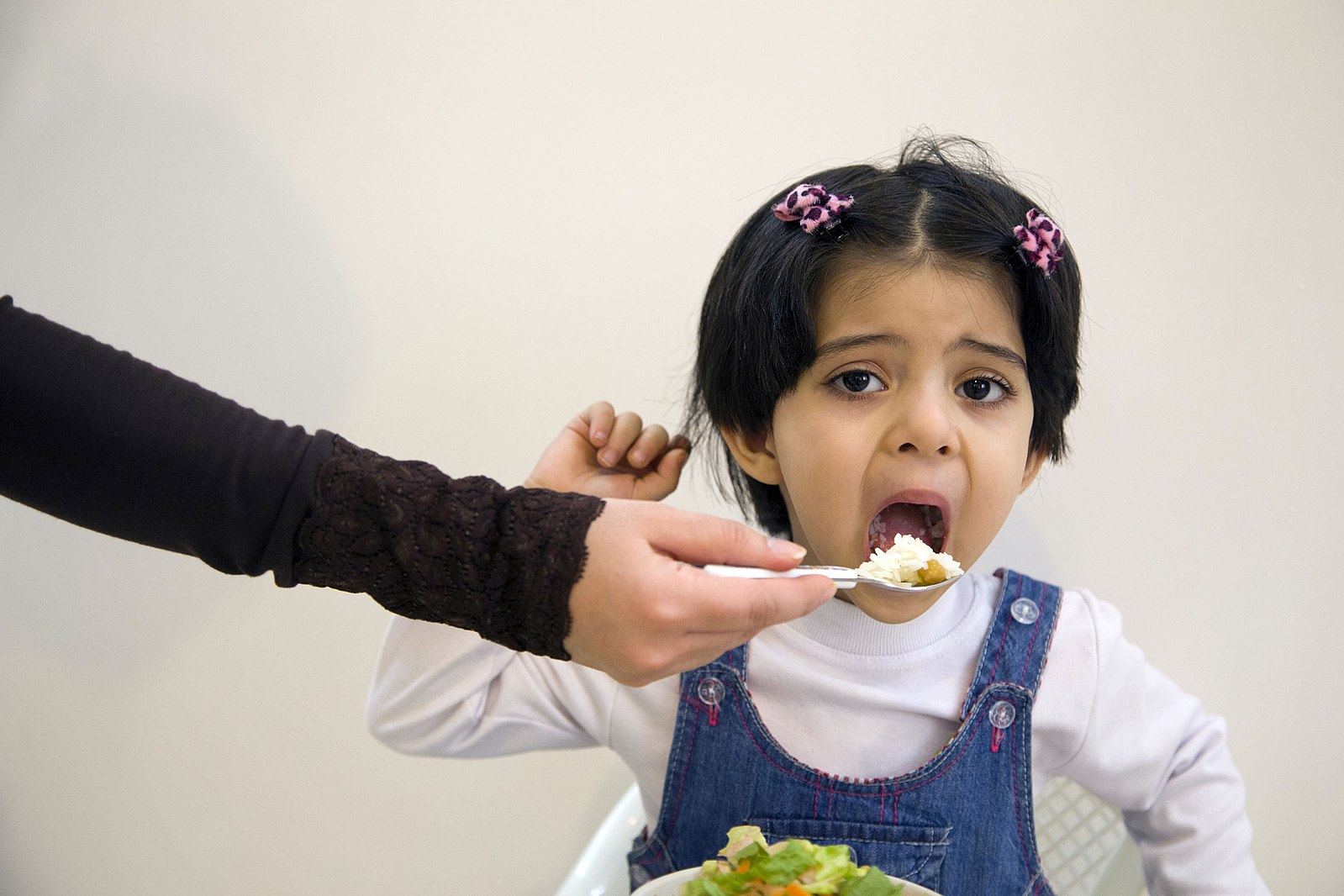How to deal with a picky eater
Experts offer evidence-based strategies to help parents keep fighting the good fight at the dinner table
Donavyn Coffey • February 7, 2019

Picky eating isn't always about taste preferences. Often children are just avoiding the unfamiliar, experts say. [Credit: Wikimedia Commons | CC BY-SA 4.0]
Emily Moskow is eight years old and she knows exactly what she doesn’t like: broccoli, cauliflower, and spinach.
But that’s a substantial improvement from when she ate only waffles, toast and cereal, say her parents, who live in Abington, Pennsylvania. Today, she’ll taste a new food when her parents ask her to. “Then I try it,” Emily says, “and then usually I spit it out.”
Emily is a picky eater. And like most picky eaters, she’s skeptical of new foods, especially fruit and vegetables. The resistance isn’t based in an unpleasant texture or taste or type of food, says Emily’s dad Evan Moskow. “I think a lot of it was her initial impression of it. It was automatically yes or no — and it stayed that yes or no.”
Emily’s parents are not alone in waging dinner table battles only to walk away defeated. Picky eating is a common part of child development starting from around age two, according to the American Academy of Pediatrics.
Incidentally, it’s also an important window of time for the development of children’s taste: The years when children are the pickiest are also the years when they form critical food habits that they could maintain throughout their entire life, according to a new meta-analysis. The toddler who eats only chicken nuggets often grows into the the adult who slyly skirts around vegetables.
But do not despair, because the evidence says there is still something parents can do. Psychologists at the University of Leeds analyzed more than 30 studies on introducing vegetables into the diets of picky eaters for a recent review published in Appetite. Their conclusion? It is possible to convince even picky eaters that dreaded vegetables aren’t so bad — but some approaches work better than others.
Repeat, Repeat, and then Repeat.
Of the nine strategies tested, the most powerful approach is what the Leeds psychologists called “taste exposure.”
Essentially, the more a child is exposed to a food, the more familiar and likeable the food becomes. The researchers found that preschool age children need to taste a food a minimum of eight to 10 times before they begin to accept it. In some cases it can take as many as 15 or 20 tries, but this is the most likely route to a long-term acceptance of a new food.
Acquired taste is not something that’s common only to kids. “Coffee is the adult example,” says Dr. Natalie Muth, a pediatrician and dietician at Rady Children’s Hospital in Carlsbad, California, who was not involved in the study. “People don’t normally like coffee upon first taste, but the more they taste it the more they like it.”
Children come around to vegetables in much the same way, she says.
Taste exposure works because starting around age two children tend to develop food neophobia — a fear of new foods.
“It’s not that they don’t like it, they aren’t familiar,” says Keith Williams, director of Penn State Children’s Hospital Feeding Program who was not involved in the Leeds study.
With each repeated exposure to a new food, the child becomes more familiar with it. Eight to 10 exposures may seem like a lot, but the good news is that a single, small bite can constitute a successful “exposure.”
Even just licking or smelling the broccoli increases their exposure to the new food, says Dr. Muth. Let’s say your family is trying out broccoli. You could consider cooking broccoli different ways at dinner twice a week, she says. If each night you offer your picky eater only a mouthful, by the end of a month you will have reached those eight exposures.
The study also found that tasting new foods did not have to be confined to meal times. Offering new foods as a snack is also effective and sometimes can even seem more playful than dinner or lunch.
Reward
Though not required to improve picky eating, social rewards — like praise — and tangible rewards — like stickers — motivate kids to eat more vegetables, experts say.
“Sometimes you just have to play their game,” says Evan Moskow, recalling the many instances where praising or including Emily among the adults convinced her to try a new food.
Such rewards, like praise and stickers, were most beneficial in combination with another strategy like taste exposures. So, if your picky eater is particularly resistant to tasting a new food, a new sticker might be a good motivator. When children were exposed to new food and rewarded for trying it, they then continued to eat new foods at three- and six-month follow ups.
No matter your strategy, both Dr. Muth and Williams say it’s critical to remember that un-sticking your picky eater is a process.
As for Emily, she is still very much a picky eater, but she likes the occasional carrot and sometimes even tolerates lentil soup. Broccoli is out of the question, she says, at least for now.
1 Comment
Great insights on tackling picky eating! Repeated exposure and creative rewards can truly make a difference. It’s all about patience and persistence—definitely a valuable approach for parents!